- | 8:08 am
Tired of staring at your blank walls? These 3 startups make buying art less intimidating
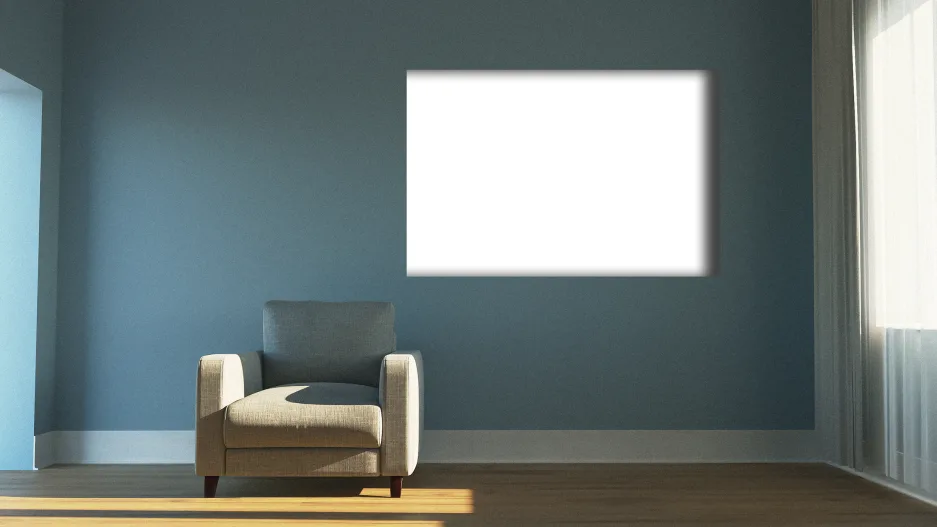
Let me start by saying that I don’t know how to choose art—at least in the traditional sense of going to a studio or gallery and buying a piece. Most of the art on my walls comes from trips or yard sales, with the exception of that one watercolor I painted and was bold enough to frame. As I scan my apartment, I realize I like how laid-back everything looks, which is the exact opposite of how “traditional” (read: expensive) art has always felt to me: intimidating and unattainable.
I know I’m not alone. A family friend recently built her own house, and the last time I visited she was saving many walls until the right piece came along (though I think in her case it wasn’t a matter of intimidation but rather not knowing where to look). Either way, the process of buying art for a home can be complicated and filled with questions: What kind of art do I like? How do I choose in a sea of talent? Where does it even go?
The art world has long been defined by elitism, but in the past few years a wave of startups have been shaking things up with new business models and innovative ways to sell art online. Gone are the days of stuffy auctions and long waitlists. No need to schmooze with gallerists, either. Now more than ever, art is becoming more accessible—and more affordable.
Here, we’ve chosen three companies that source and sell their wares in surprising new ways. May they help you find the one piece that resonates.
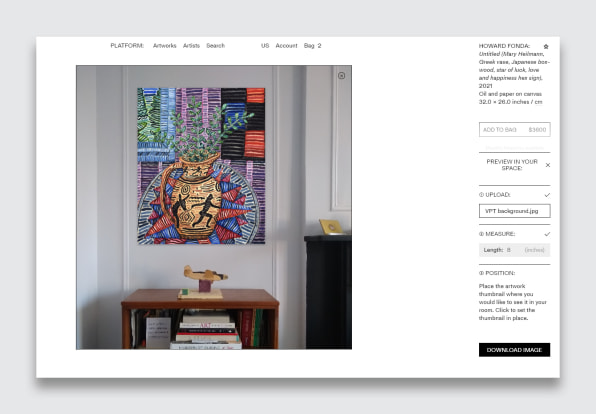
[Screenshot: Platform]
PLATFORM
Platform was born in May 2020 with a seemingly simple goal: to build an online destination for buying art—and demystify art buying in the process. “The idea for Platform comes from the fact that art needs to meet the rest of the world where it is,” says Bettina Huang, Platform’s founding head and general manager. “People don’t have to network to be on a waitlist. Typical practices don’t make sense for a younger audience.”
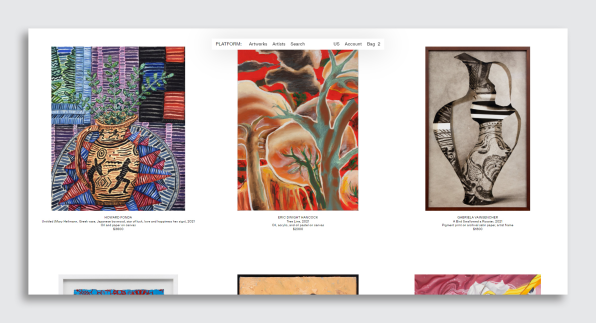
[Screenshot: Platform]
Each month, a limited number of about 100 artworks are released on the site. All are pulled from an ever-evolving set of galleries from around the United States, and selected with the input of the world-renowned David Zwirner gallery. Works are available for a limited time before a new roster comes in at the start of the next month. The idea is to provide a highly curated, constantly changing collection on the site. Huang likens it to Net-a-Porter, the boutique luxury fashion retailer: “Everything is really good and thoughtfully selected,” she says. “If we had a huge site that was less edited, it wouldn’t create that same experience of trust.”The average price point is $5,000, but works range between $1,000 and $35,000. “We look for artists who have a lot of great credibility and are at an inflection point in their career,” Huang says, noting that could mean training at a prestigious art school or having a strong exhibition track record.
Don’t know where to start? Huang recommends checking out Eliza Douglas, who she calls “a cultural figure who goes beyond every boundary of gender identity,” graffiti artist Katsu, and Isaac Tin Wei Lin, an artist whose work refers to science and algorithms.
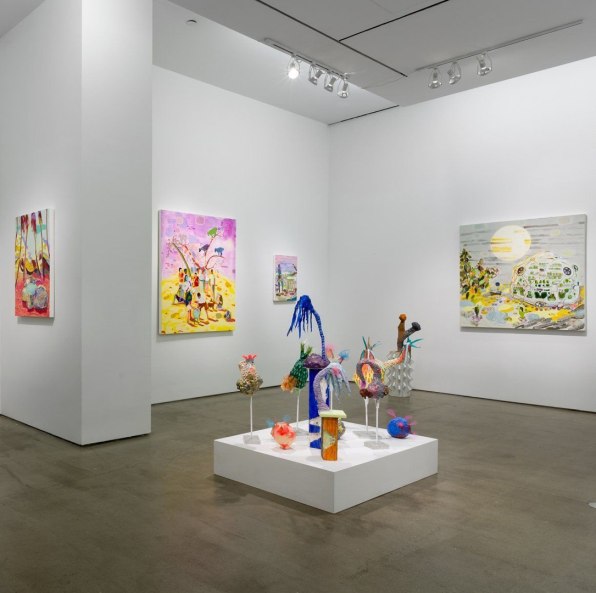
[Photo: courtesy Parlor]
PARLOR
On average, more than 95% of artworks held in museums and galleries are hidden away in storage. Galleries are limited in size, and there’s only so much work they can show in the span of an exhibition. Born in 2019, Parlor’s goal is to support art galleries by making more art available online, and to make it available to a wider customer base by offering rentals. “Nowadays, if I want to buy a car, I’m going to rent one first,” says Julian Siegelmann, Parlor’s founder and CEO. “There are so many ways that I can try something before I can buy it, and that’s where the idea for this product came from.”

Ricardo Gonzalez, Untitled, 2017 [Image: courtesy Parlor]
Parlor currently has about 400 works priced in four different tiers. For art priced below $2,500, you’d pay $50 per month. For art priced between $2,500 and $10,000, you’d pay $100 per month, and so on. The least-expensive art is around $1,000 (so you’d pay it off in 20 months, should you decide to keep it). The most expensive is around $65,000; it would take 18 years to pay it off, at $300 per month. Parlor shares the monthly revenue with the galleries, and handles framing, delivery, installation, and insurance costs. Galleries choose whether to pay their artists on a monthly basis or at the end of the renting period, though Siegelmann says it’s usually the latter.
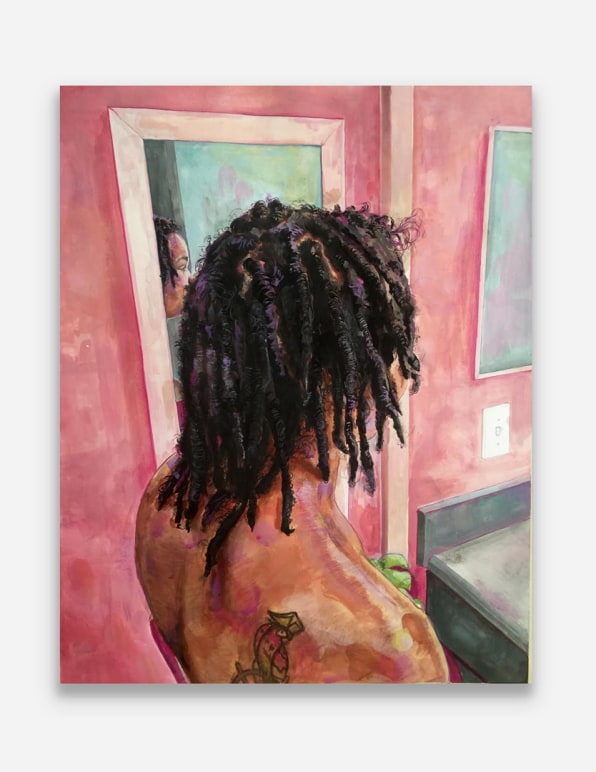
Jurrell Cayetano, Krissy, 2016 [Image: courtesy Parlor]
Renting a work of art has many benefits. For starters, you’re not wedded to it, so if you end up changing your mind, you can return it. But for Siegelmann, it’s mostly a way to help people finance their purchase and invest in quality art at an affordable price. He says 60% of Parlor customers end up buying the pieces they rent.“The audience isn’t people who are looking to rent and swap,” he says. “For furniture and clothing, it’s a very utilitarian thing, but for art it’s such an emotional purchase that rent is an easier way to have a return policy to it.”
Don’t know where to start? Siegelmann recommends works by Ricardo Gonzalez, Marjolijn de Wit, and Ragnar Kjartansson.
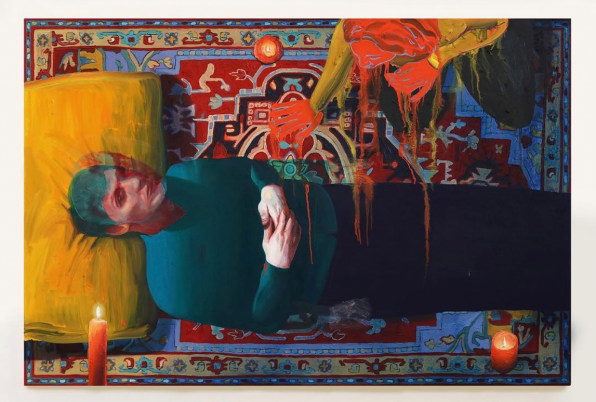
Daniel Dias, Deep Down Voices, 2021 [Image: courtesy AucArt]
AUCART
When AucArt launched in December 2017, it was the world’s first online auction house to feature recent graduates’ artwork. Since then, the company has pivoted to a hybrid model where people can buy outright, or make an offer like at auctions. (If you choose to buy outright, you won’t have to pay a buyer’s premium—an extra fee usually charged based on the final price.)
“When I set out, I wanted to democratize the art world and give everyone the opportunity to create amazing avant-garde collections and own some of the biggest names,” says Natasha Arselan, AucArt’s founder and CEO.
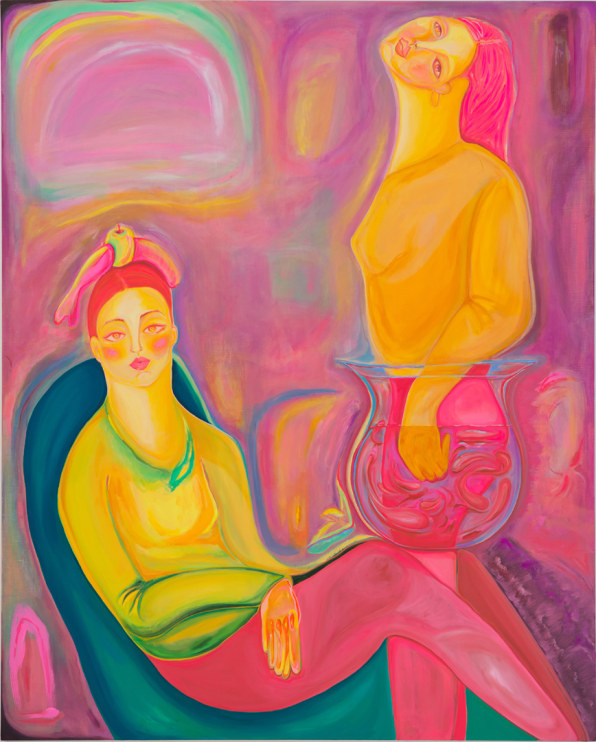
Jiy Kang, Watching Jujube and Me, 2021 [Image: courtesy Aucart]
AucArt has expanded to include emerging artists who have had solo shows or participated in exhibitions, but about 25% to 30% of artists remain recent graduates. The company sells directly from the artists’ studios, which helps them cut out the middleman and sell art sooner, and at a slightly lower price. If you see an artist that you like but want something made specifically for you, AucArt can help you commission the artist, as well.
The gallery features around 180 artists and about 1,000 works, ranging in price from $200 to just under $20,000. Like Parlor and Platform, AucArt lists all prices on its website. “The art world was super opaque before going online,” Arselan says.
Don’t know where to start? Arselan recommends David Dias, Camille Cottier, and Marlene Dumas. “[Cottier and Dumas] are very emotive . . . they’re about connection and there is something very naive I love about them,” she says.
The more you look, the more examples you’ll find of new ways to buy art. London-based startup Gertrude lets you rent works by emerging and established artists. For 50 pounds (roughly $65) per month, you can live with a painting by Paula Rego, who recently had her own exhibition at London’s Tate Britain gallery. Later Editions commissions artists to produce limited-edition prints for as little as $369. And because it’s 2022, when everything can be purchased online, you can buy all of these piecese without ever leaving your couch. You can even visualize what they would look like in your home, thanks to Platform’s embedded technology or Artsy’s app.
Now, no more excuses—go find something special for that blank wall!





































